|
Books Should Be Free Loyal Books Free Public Domain Audiobooks & eBook Downloads |
|
|
Books Should Be Free Loyal Books Free Public Domain Audiobooks & eBook Downloads |
|
Fiction |
|---|
|
Book type:
Sort by:
View by:
|
By: Murray Leinster (1896-1975) | |
|---|---|
 Creatures of the Abyss
Creatures of the Abyss
Orejas de ellos, "the things that listen", whispered the superstitious fishermen when the strange occurrences began off the Philippine coast. How else explain the sudden disappearance of a vessel beneath a mysterious curtain of foam? The writhings of thousands of maddened fish trapped in a coffin-like area of ocean? What monsters gorged at the bottom of the Luzon Deep and what were their plans? Radar expert Terry Holt and the crew of the Esperance had to devise a weapon against the horrifying creatures which threatened mankind with extinction. Here are terror, excitement, and the clutch of cold death as combined by a master hand in the field of science fiction. | |
 Wailing Asteroid
Wailing Asteroid
There was no life on the asteroid, but the miles of rock-hewn corridors through which the earth party wandered left no doubt about the purpose of the asteroid. It was a mighty fortress, stocked with weapons of destruction beyond man's power to understand. And yet there was no life here, nor had there been for untold centuries. What race had built this stronghold? What unimaginable power were they defending against? Why was it abandoned? There was no answer, all was dead. But—not quite all. For in a room above the tomb-like fortress a powerful transmitter beamed its birdlike, fluting sounds toward earth... | |
 Juju
Juju
A 1919 pulp-press tale of deepest darkest Africa. | |
 Red Dust
Red Dust
You who have read "The Mad Planet" by Murray Leinster, will welcome the sequel to that story. The world, in a far distant future, is peopled with huge insects and titanic fungus growths. Life has been greatly altered, and tiny Man is now in the process of becoming acclimated to the change. We again meet our hero Burl, but this time a far greater danger menaces the human race. The huge insects are still in evidence, but the terror they inspire is as nothing compared to the deadly Red Dust. You will follow this remarkable story with breathless interest... | |
 Planet of Dread
Planet of Dread
Humans have expanded to myriads of worlds throughout the galaxies but they have found that the only way for colonies to be self sustaining, was to reproduce the total ecology of their home world; the original Earth. This meant bringing the entire ecosystem, the good, the bad and the ugly. Viruses as well as grass, goats as well as stink bugs and allowing the whole mixture to ultimately produce an inhabitable world for humans. But what happens when this system is not properly supervised? Moran and the others in the space yacht Nadine find a world where strange things have been brewing for over a hundred years and may or may not survive an environment gone mad. | |
 Nightmare Planet
Nightmare Planet
In science-fiction, as in all categories of fiction, there are stories that are so outstanding from the standpoint of characterization, concept, and background development that they remain popular for decades. Two such stories were Murray Leinster's The Mad Planet and Red Dust. Originally published in 1923, they have been reprinted frequently both here and abroad. They are now scheduled for book publication. Especially for this magazine, Murray Leinster has written the final story in the series. It is not necessary to have read the previous stories to enjoy this one... | |
 Med Ship Man
Med Ship Man
Join Space Medical Service officer Calhoun and his sidekick Murgatroyd the tormal on another exciting adventure, this time on what should be a routine visit to the planet Maya, which upon arrival appears to be completely devoid of all life! | |
By: Myrtle Reed (1874-1911) | |
|---|---|
 Lavender and Old Lace
Lavender and Old Lace
“Jane Hathaway and her niece, Ruth Thorne, have never met. Jane invites Ruth for a visit, but leaves before Ruth comes. Ruth agrees to come to Jane for quiet and rest. When Ruth arrives, the maid gives her a letter from her aunt. In the letter, Aunt Jane does not tell Ruth anything about her trip abroad but insists that Ruth light an oil lamp in the attic each night. Very soon, the all together forgotten past and the steady present are united.” | |
 A Spinner in the Sun
A Spinner in the Sun
Myrtle Reed may always be depended upon to write a story in which poetry, charm, tenderness and humor are combined into a clever and entertaining book. Her characters are delightful and she always displays a quaint humor of expression and a quiet feeling of pathos which give a touch of active realism to all her writings.In "A Spinner in the Sun" she tells an old-fashioned love story, of a veiled lady who lives in solitude and whose features her neighbors have never seen. There is a mystery at the heart of the book that throws over it the glamour of romance | |
 At The Sign of The Jack O'Lantern
At The Sign of The Jack O'Lantern
This begins with an odd inheritance at the end of a honeymoon, both parties being inexperienced. Then someone comes to visit, then another, until we've got a chaotic bedlam of New England's tragically off the wall odd-ball relations. Our protagonists may not communicate efficiently at first but at least they've got a sense of humours. The humourous style keeps up as well as some moments of lustre and rich feeling about the printed word itself. (Introduction by D. Wor) | |
 Old Rose and Silver
Old Rose and Silver
The novel follows the lives of Rose and her widowed Aunt, Madame Francesca Bernard, along with young visitor and cousin Isabel, whose lives are changed by the return of an old friend and neighbour Colonel Kent, and his grown son, Allison. Other characters that help shape their lives in significant ways are the Crosby twins, unconventional and uninhibited youths that set society at naught, and an unconventional doctor who specializes in the impossible. Through the limited "wide-scope" descriptions... | |
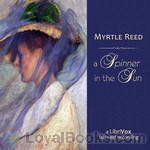 A Spinner in the Sun (dramatic reading)
A Spinner in the Sun (dramatic reading)
Myrtle Reed may always be depended upon to write a story in which poetry, charm, tenderness and humor are combined into a clever and entertaining book. Her characters are delightful and she always displays a quaint humor of expression and a quiet feeling of pathos which give a touch of active realism to all her writings. In "A Spinner in the Sun" she tells an old-fashioned love story, of a veiled lady who lives in solitude and whose features her neighbors have never seen. There is a mystery at the heart of the book that throws over it the glamour of romance. | |
By: Natalie Sumner Lincoln (1881-1935) | |
|---|---|
 The Red Seal
The Red Seal
Nothing is what it seems to be as events unfold in this entertaining mystery by Natalie Sumner Lincoln. Red seals and red herrings abound and will keep you guessing all the way through the final chapter! | |
 Cat's Paw
Cat's Paw
Susan Baird is found dead at her tea-table and all the evidence points to murder. She is supposed to have been penniless but when her will is found her niece Kitty inherits a fortune. Grave suspicion shifts from one person to another and the two suitors for Kitty's hand whom Washington society had watched with interest seem closely connected with the many clues which again and again prove worthless. Until the closing chapters unravel the mystery you suspect the most innocent people and the real murderer and his fiendish devices come as a shock. - Summary from "The Book Review Digest" 1923 | |
 Unseen Ear
Unseen Ear
Judith Richards is seated alone in her father's library at midnight, when a man enters, rifles her father's safe, and is examining his loot when a steel blade darts thru the portières, pierces him and he falls dead to the floor. Judith meanwhile has remained undisturbed, for she is seated with her back to the intruder and she is, moreover, stone deaf. When she finally rises to leave the room, she discovers the crime, and recognizes the victim as the stepson of her uncle. Detective Ferguson comes to the conclusion that the murder must have been an inside job, and the members of the household come under suspicion... | |
By: Nathan Gallizier (1866-1927) | |
|---|---|
 Under the Witches' Moon
Under the Witches' Moon
The scene is Rome, 935 A.D. Thirty-year-old Tristan, dressed as a pilgrim, overhears a conversation between Basil, the Grand Chamberlain, and Il Gobbo, his assistant. After the two have left, Tristan continues to observe the revelry on the Eve of St. John. Suddenly a chariot containing a beautiful woman stops before him. They exchange words. He kisses her hand. Then she moves on, leaving him to ponder her beauty as he returns to the inn where he is staying. That night he has an enchanting and haunting dream of him together with another woman... | |
By: Nathaniel Hawthorne (1804-1864) | |
|---|---|
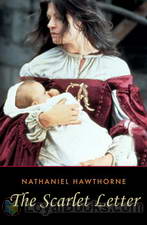 The Scarlet Letter
The Scarlet Letter
A beautiful woman who is punished for the mortal sin of loving a man other than her husband, a cowardly lover, a vengeful husband, a rebellious illegitimate child and the oppressive and patriarchal morality of 17th century Puritanism in Boston. Together these form an unforgettable and thought-provoking glimpse of how much social attitudes have changed over the centuries. Nathaniel Hawthorne was the creator of such beloved works as Twice-Told Tales, A Wonder Book for Boys and Girls, The House of the Seven Gables and spine-chilling tales like Roger Malvin's Burial... | |
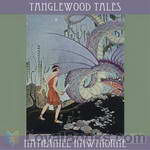 Tanglewood Tales
Tanglewood Tales
A sequel to Nathaniel Hawthorne's earlier volume of Greek mythology interpreted and retold for young people, Tanglewood Tales includes more legends and tales of ancient heroes and monsters. In his earlier book, A Wonder-Book for Girls and Boys, Hawthorne had designed the book to be a book within a book. A young college student keeps a group of young children entertained by retelling Greek myths in a way in which they can easily understand. Nathaniel Hawthorne also wrote a brief introduction to Tanglewood Tales, entitled The Wayside... | |
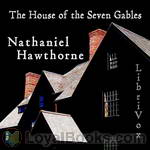 The House of the Seven Gables
The House of the Seven Gables
“The wrongdoing of one generation lives into the successive ones and… becomes a pure and uncontrollable mischief.” Hawthorne’s moral for “The House of the Seven Gables,” taken from the Preface, accurately presages his story. The full weight of the gloomy mansion of the title seems to sit on the fortunes of the Pyncheon family. An ancestor took advantage of the Salem witch trials to wrest away the land whereon the house would be raised… but the land’s owner, about to be executed as a wizard, cursed the Pyncheon family until such time as they should make restitution... | |
 Rappaccini's Daughter
Rappaccini's Daughter
The story is set in Padua in a distant, but unspecified past. From his quarters, Giovanni, a young student of letters, observes Beatrice, the beautiful daughter of Dr. Rappaccini, a scientist working in isolation. Beatrice is confined to the lush and locked gardens filled with poisonous plants by her father. Having fallen in love, Giovanni enters the garden and meets with Beatrice a number of times regardless of the warning of his mentor, Professor Baglioni, that Rappaccini is up to no good and he and his work should be avoided. | |
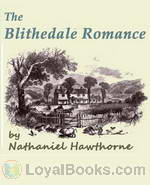 The Blithedale Romance
The Blithedale Romance
The Blithedale Romance is the story of four principal characters who work with -- and sometimes against -- each other on Blithedale, a communal farm antecedent to those that sprang up later in the 1960s, and similar to one on which Hawthorne himself lived in 1841. These communes arose out of the pressures on society and the individual brought by the Industrial Revolution. Some were organized around religious philosophies, some were secular. Among the secularists, the Transcendental movement mentioned in the novel espoused the idea that the individual's intuition, rather than religious dogma, was the true path to spiritual enlightenment... | |
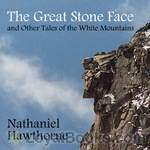 The Great Stone Face and Other Tales of the White Mountains
The Great Stone Face and Other Tales of the White Mountains
A collection of four short stories by Nathaniel Hawthorne, the common theme of which is New Hampshire's White Mountains. Consists of: The Great Stone Face, written in 1850 and revolves around the 'Old Man of the Mountain (Cannon Mtn.) in New Hampshire which sadly collapsed on May 3, 2003; The Ambitious Guest, written in 1835; The Great Carbuncle, written in 1837; and Sketches From Memory, written sometime prior to The Great Carbuncle as will become obvious. | |
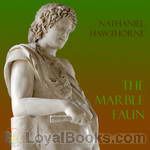 The Marble Faun
The Marble Faun
The Marble Faun is Hawthorne's most unusual romance. Writing on the eve of the American Civil War, Hawthorne set his story in a fantastical Italy. The romance mixes elements of a fable, pastoral, gothic novel, and travel guide. In the spring of 1858, Hawthorne was inspired to write his romance when he saw the Faun of Praxiteles in a Roman sculpture gallery. The theme, characteristic of Hawthorne, is guilt and the Fall of Man. The four main characters are Miriam, a beautiful painter who is compared... | |
 Twice Told Tales
Twice Told Tales
Twice-Told Tales is a short story collection in two volumes by Nathaniel Hawthorne. The first was published in the spring of 1837, and the second in 1842. The stories had all been previously published in magazines and annuals, hence the name. (Introduction by Wikipedia) | |
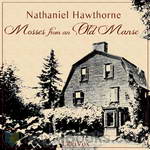 Mosses from an Old Manse
Mosses from an Old Manse
"Mosses from an Old Manse" is a short story collection by Nathaniel Hawthorne, first published in 1846. The collection includes several previously-published short stories and is named in honor of The Old Manse where Hawthorne and his wife lived for the first three years of their marriage. A second edition was published in 1854, which added "Feathertop," "Passages from a Relinquished Work, and "Sketches from Memory."Many of the tales collected in "Mosses from an Old Manse" are allegories and, typical of Hawthorne, focus on the negative side of human nature... | |
 Dolliver Romance and Other Pieces
Dolliver Romance and Other Pieces
This post-humous collection of stories, sketches and essays by celebrated quintessential New England author Nathaniel Hawthorne gives us glimpses of the many different facets of Hawthorne's personality. The titular tale The Dolliver Romance was an unfinished manuscript that was edited and prepared for publication after Hawthorne's death and relates the story of an aged man with a small child in his care who swallows a magical tincture daily that rejuvenates his vitality, reversing the aging process... | |
By: Neil Boyton, S.J. (1884-1956) | |
|---|---|
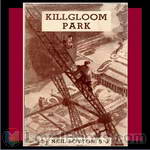 Killgloom Park
Killgloom Park
Join Angelo Daily and his chums during a fun filled summer at Killgloom Park, a Coney Island, New York amusement park in the 1930's. A runaway tiger! Tracking down a wanted thief! Climbing down a ferris wheel in the middle of the night! These are just a few of the exciting things that happen during this adventurous summer!The author grew up in the world of amusement parks, providing first hand material for two of his boys books – “On the Sands of Coney” and its sequel, this title - “Killgloom Park”... | |
By: Neil Munro (1863-1930) | |
|---|---|
 Doom Castle
Doom Castle
Doom Castle is the story of young Count Victor's journey to Scotland after the Jacobite Rebellion, searching for a traitor to the Jacobite cause as well as a mysterious man under the name of "Drimdarroch", whom he swore revenge. After a perilious journey, Count Victor arrives at Doom Castle as a guest of the enigmatic Baron of Doom, his two strange servitors and his beautiful daughter... (Summary by Carolin) | |
By: Nella Larsen (1891-1964) | |
|---|---|
 Passing
Passing
Nella Larsen, a writer of the Harlem Renaissance, wrote two brilliant novels that interrogated issues of gender and race. In Passing, her second novel published in 1929, she examines the troubled friendship between two mixed-race women who can pass as white. One, Irene Redfield, marries a black man and lives in Harlem, while the other, Clare Kendry, marries a bigoted white man. Clare re-enters Irene's life after an absence of many years, and stirs up painful questions about identity. (Introduction by Elizabeth Klett) | |
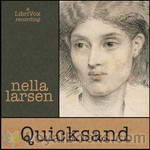 Quicksand
Quicksand
Quicksand is a 1928 novel by Nella Larsen, a writer of the Harlem Renaissance. It focuses on Helga Crane, a mixed-race woman who is a schoolteacher in the American south. As the novel opens, she suddenly decides to give up her teaching position and go north, back to her roots in Chicago. Helga's restless search for identity is semi-autobiographical, inspired by Larsen's own struggles to reconcile her mixed heritage with the racism of 1920s America. Although this novel was published after 1923, the copyright was never renewed and is therefore in the public domain. (Introduction by Elizabeth Klett) | |
By: Nicholas Carter | |
|---|---|
 Snarled Identities
Snarled Identities
Nick Carter is a fictional detective who first appeared in 1886 in dime store novels. Over the years, different authors, all taking the nom de plume Nicholas Carter, have penned stories featuring "America's greatest detective". It is time for Nick to take a much-earned vacation, but Chick is disconcerted to see him continuing to read the newspaper. Who know what mystery will catch his eye? Suddenly, he notices the announcement of the death of his old adversary 'Green-Eye Gordon'. | |
 Man Without a Conscience
Man Without a Conscience
Nick Carter is a fictional detective who first appeared in 1886 in dime store novels. Over the years, different authors, all taking the nom de plume Nicholas Carter, have penned stories featuring "America's greatest detective". In this story, Nick has been contacted by his old friend, Chief Weston, of the Boston Police Department. When he arrives, he is shown a photograph, depicting a crime in progress and is informed there has been a spate of holdups on local highways. Something has to be done but Nick doesn't usually resort to consulting a fortune teller! | |
 Stolen Name
Stolen Name
Nick Carter is a fictional detective who first appeared in 1886 in dime store novels. Over the years, different authors, all taking the nom de plume Nicholas Carter, have penned stories featuring "America's greatest detective". In this story, Nick finds himself in a quandary. He must choose between helping a friend, with a dubious past or arresting a master crook, long thought dead, but now setting up a new scam. Will he save his friend or, with the help of his assistants, stop the thief in his tracks? | |
 Twin Mystery
Twin Mystery
Nick Carter is a fictional detective who first appeared in 1886 in dime store novels. Over the years, different authors, all taking the nom de plume Nicholas Carter, have penned stories featuring "America's greatest detective". In this story, Nick receives a letter foretelling of a murder. His wife, Edith, believes it was from a woman... but who is the Brown Robin, and why taunt the great detective? - Summary by Lynne Thompson | |
 Fatal Message
Fatal Message
Nick Carter is a fictional detective who first appeared in 1886 in dime store novels. Over the years, different authors, all taking the nom de plume Nicholas Carter, have penned stories featuring "America's greatest detective". This tale opens with Nick eavesdropping on two strangers in the next booth as he finishes his lunch. One of the men works at the telegraph office and is discussing an unusual wire he received. Nick's interest is aroused. | |
 Under the Tiger's Claws; or, A Struggle for the Right (Version 2)
Under the Tiger's Claws; or, A Struggle for the Right (Version 2)
A prominent banker calls Nick Carter in to investigate $90,000 in missing funds—and a trusted clerk who has disappeared. [Summary by Paul Hampton] | |
 Under the Tiger's Claws
Under the Tiger's Claws
Nick Carter is a fictional detective who first appeared in 1886 in dime store novels. Over the years, different authors, all taking the nom de plume Nicholas Carter, have penned stories featuring "America's greatest detective". In this story, Nick is called to visit his banker friend, Mr. Gilsley, who is concerned about some missing money. Also present at the meeting is Belle Braddon, the banker's stenographer. Although the young woman is striking, there is something about her that Nick doesn't trust. - Summary by Lynne Thomson | |
 Sharper's Downfall; Or, Into the Net
Sharper's Downfall; Or, Into the Net
Bigamy, blackmail, damsels in distress, gambling and kidnapping--this story has it all, plus Nick Carter and his crew in hot pursuit of the criminals. - Summary by Paul Hampton | |
 Mask of Death
Mask of Death
America's greatest detective is back! "Nick Carter will solve the mystery. No crime is too deep for him. He’ll ferret out the truth and run down the rascals. He will recover your lost treasures, too, Mr. Strickland, one and all of them, take my word for it. If there is one man on earth who can accomplish it, Nick Carter is that one man. So pull yourself together, sir, and face this calamity man fashion." Mr. Rudolph Strickland's apartment occupies the entire floor of the building and was crammed with priceless treasure. The robbery threatens to destroy his fragile health.[/ | |
 Out of Death's Shadow
Out of Death's Shadow
Nick Carter is a fictional private detective who first appeared in 1886 in dime store novels. Over the years, different authors, all taking the nom de plume Nicholas Carter, have penned stories. Here, the tale begins with the trial of a woman, sure to be convicted and face the gallows. Or is she? | |
 Broken Bond
Broken Bond
Nick Carter is a fictional private detective who first appeared in 1886 in dime store novels. Over the years, different authors, all taking the nom de plume Nicholas Carter, have penned stories featuring "America's greatest private detective". This tale opens in South America, with a lone man lying in wait in the mountains. He lets a caravan of peasants pass. Ten minutes later, the sound of a horse's hooves signal the arrival of his quarry. Who is the man and why is he trying to shoot his victim? | |
 Hidden Foes
Hidden Foes
Nick Carter is a fictional detective who first appeared in 1886 in dime store novels. Over the years, different authors, all taking the nom de plume Nicholas Carter, have penned stories featuring "America's greatest detective". He has his work cut out when a body is discovered in a corridor of the second floor of the Wilton Hotel. He is quickly identified as Gaston Todd. Is his death a result of the ongoing feud with another man over the hand of society belle, Edna Thurlow? Surely it can't be as cut and dried as that? - Summary by Lynne Thompson | |
 Photographer's Evidence
Photographer's Evidence
Nick Carter is a fictional detective who first appeared in 1886 in dime store novels. Over the years, different authors, all taking the nom de plume Nicholas Carter, have penned stories featuring "America's greatest detective". One evening, a stranger calls on our hero at home, with a tale of the kidnap of the governor's daughter and theft of some important papers; but when he begins to conceal information, Nick refuses to help and becomes suspicious. As Mr. Snell leaves, the detective's sidekick, Patsy, follows. | |
 Battle for the Right
Battle for the Right
Nick Carter is a fictional detective who first appeared in 1886 in dime store novels. Over the years, different authors, all taking the nom de plume Nicholas Carter, have penned stories featuring "America's greatest detective". The scene is set at an upscale road house not far from New York City. Tucked away in a quiet room, five men sit at a poker game, when one is accused of cheating. A scuffle ensues and the man ends up dead. But surely he wasn't hit that hard? Did he have a heart condition? We can be sure Nick will get to the bottom of the affair. - Summary by Lynne Thompson | |
 Great Diamond Syndicate
Great Diamond Syndicate
Nick Carter is a fictional detective who first appeared in 1886 in dime store novels. Over the years, different authors, all taking the nom de plume Nicholas Carter, have penned stories featuring "America's greatest detective". Nick is approached by a young friend with a sorry tale to tell. His inheritance from his father, some valuable diamonds, have been stolen, his uncle murdered during the robbery and his cousin brutally assaulted. Who could the perpetrators be, and how did they know of the diamonds so recently arrived from South Africa? You can be sure Nick will solve the riddle. | |
 Captain Sparkle, Pirate
Captain Sparkle, Pirate
Nick Carter is a fictional detective who first appeared in 1886 in dime store novels. Over the years, different authors, all taking the nom de plume Nicholas Carter, have penned stories featuring "America's greatest detective". Nick is only visited by the rich and famous, and in this swashbuckling story, it is Nick's friend Maxwell Kane who asks for help, after his yacht has been boarded by pirates while at anchor. Max and his guests are dicombobulated, but Nick will get to the bottom of the case. | |
By: Nikola Tesla (1856-1943) | |
|---|---|
 "My Inventions" and Other Works, The Autobiography of Nikola Tesla, Electrical Experimenter February to October 1919
"My Inventions" and Other Works, The Autobiography of Nikola Tesla, Electrical Experimenter February to October 1919
Between February and October 1919, Nikola Tesla submitted many articles to the magazine Electrical Experimenter. The most famous of these works is a six part series titled "My Inventions", which is an autobiographical account of Nikola Tesla's life and his most celebrated discoveries. This work has been compiled and republished as a stand-alone book several times under different names, but has been a cause of some controversy due to some versions deviating from the original text without explanation... | |
By: Nikolai Chernyshevsky (1828-1889) | |
|---|---|
 Vital Question, or, What is to be Done?
Vital Question, or, What is to be Done?
Despised by Dostoyevsky and Tolstoy, What Is To Be Done? is a fascinating, sympathetic story of idealistic revolutionaries in mid-nineteenth century tsarist Russia; translator Nathan Haskell Dole affirms in his preface his conviction that it is a thriller that no one can put down once s/he begins it. Its variegated cast of characters includes Vera Pavlovna, a boldly independent woman in a time of great oppression, and the inspirational radical Rakhmetov. The author wrote the novel from the depths of the infamous Peter & Paul Fortress of St... | |
By: Nikolai Leskov (1831-1895) | |
|---|---|
 Steel Flea
Steel Flea
An 1881 comic story by Nikolai Leskov, presented in the form of a traditional skaz or folk-tale, but entirely of Leskov's invention. It tells the story of a left-handed Russian artisan required to impress Tsar Nikolas I with his craftsmanship by outdoing some famous Englishmen who have created a tiny mechanical flea. The Russian smith barricades himself with two skilled colleagues in his workshop until finally forced to come out and reveal the brilliant result of his labor. Far more famous in Russia than in the West, the story of The Steel Flea reveals much about nineteenth-century Russian attitudes toward the West and toward their own country, but is difficult to categorize... | |
By: Nikolai Vasilievich Gogol | |
|---|---|
 Dead Souls
Dead Souls
Dead Souls by Nikolai Gogol, Russian writer, was first published in 1842, and is one of the most prominent works of 19th-century Russian literature. Gogol himself saw it as an “epic poem in prose”, and within the book as a “novel in verse”. Despite supposedly completing the trilogy’s second part, Gogol destroyed it shortly before his death. Although the novel ends in mid-sentence (like Sterne’s Sentimental Journey), it is usually regarded as complete in the extant form. In Russia before the emancipation of the serfs in 1861, landowners were entitled to own serfs to farm their land... | |
By: Noah Lott | |
|---|---|
 The Silly Syclopedia
The Silly Syclopedia
A Terrible Thing in the Form of a Literary Torpedo which is Launched for HILARIOUS PURPOSES ONLY. Inaccurate in Every Particular Containing Copious Etymological Derivations and Other Useless Things by Noah Lott (an ex-relative of Noah Webster) | |
By: Norman F. Langford | |
|---|---|
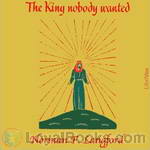 The King Nobody Wanted
The King Nobody Wanted
In a very real and interesting way, The King Nobody Wanted tells the story of Jesus. Where the actual words of the Bible are used, they are from the King James Version. But the greater part of the story is told in the words of every day. (Introduction by N. F. Langford) | |
By: Norman Lindsay (1879-1969) | |
|---|---|
 The Magic Pudding
The Magic Pudding
Bunyip Bluegum the koala sets out on his travels taking only a walking stick. At about lunchtime, feeling more than slightly peckish, he meets Bill Barnacle the sailor and Sam Sawnoff the penguin who are eating a pudding. The pudding is a magic one which, no matter how much you eat it, always reforms into a whole pudding again. He is called Albert, has thin arms and legs and is a bad-tempered, ill-mannered so-and-so into the bargain. His only pleasure is being eaten. The book is divided into four "slices" instead of chapters. (Introduction by Wikipedia) | |
By: O. Henry (1862-1910) | |
|---|---|
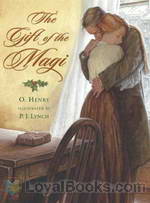 The Gift of the Magi
The Gift of the Magi
The Gift of the Magi is an O. Henry short story in which a young couple are very much in love with each other but can barely afford their one-room apartment. For Christmas, they each make a sacrifice to purchase a gift for the other, with ironic results. The moral of the story is that physical possessions, however valuable they may be, are of little value in the grand scheme of things. The true unselfish love that the characters, Jim and Della, share is greater than their possessions. O. Henry ends the story by clarifying the metaphor between the characters in the story, Della and James (or Jim), and the Biblical Magi... | |
 Cabbages and Kings
Cabbages and Kings
This work is O. Henry's first published volume and is considered to be his only novel. The plot is composed of several short stories, which were inspired by the author's six-month stay in Honduras in the late 1890s. "The incidents embracing as they do, a variety of subjects, hang loosely together, so loosely in fact, that at times one finds no apparent connection between them at all, and yet in the end one sees how each is intimately related to the other. ...Written by a less able hand than O. Henry's the book might have been a sad jumble, perhaps comprehensible to none but the Walrus--but as it is, one finds a joy in its every obscurity... | |
 Whirligigs
Whirligigs
A collection of short stories. | |
 Gentle Grafter
Gentle Grafter
If Jefferson "Parleyvoo" Pickens had appeared in print just a few years later, he might have been the "Gentle Grifter" instead of the "Gentle Grafter", the name O. Henry picked for him. His situation as an ethical graft artist gives Jeff an extra impediment in pursuing his craft, but he never wanted it to be too easy. The result is fourteen delightful tales for us and a number of new partners for him. With those partners (he always has at least one) he works his way through a number of confidence games... | |
 Heart of the West
Heart of the West
A collection of short stories by the legendary O. Henry. | |
 Options
Options
O. Henry needs no introduction of course; the man who made the short story with the surprise ending famous. These 16 stories are all wonderful examples of his word sculpting art. They include: "The Rose of Dixie"; The Third Ingredient; The Hiding of Black Bill; Schools and Schools; Thimble, Thimble; Supply and Demand; Buried Treasure; To Him Who Waits; He Also Serves; The Moment of Victory; The Head-Hunter; No Story; The Higher Pragmatism; Best-Seller; Rus in Urbe; A Poor Rule | |
By: Octavus Roy Cohen (1891-1959) | |
|---|---|
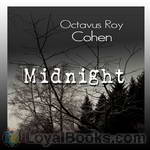 Midnight
Midnight
The crime seemed to have lost itself in the sleety cold of the December midnight upon which it was committed. The trails were not blind–there were simply no trails. The circumstances baffled explanation–a lone woman entering an empty taxicab; a run to a distant point in the city; the discovery of the woman’s disappearance, and in her stead the sight of the dead body of a prominent society man–that, and the further blind information that the suit-case which the woman had carried was the property of the man whose body was huddled horribly in the taxicab. | |
By: Olive Beaupre Miller [editor] (1883-1968) | |
|---|---|
 In the Nursery of My Bookhouse
In the Nursery of My Bookhouse
Full of delightful nursery rhymes, charming poems and engaging stories, folk and fairy tales, this is the first volume of the "My Bookhouse" series for little ones. Originally published in the 1920's as a six volume set, these books, edited by Olive Beaupre Miller, contained the best in children's literature, stories, poems and nursery rhymes. They progressed in difficulty through the different volumes - this first being intended for the youngest audience. | |
By: Olive Schreiner (1855-1920) | |
|---|---|
 The Story of an African Farm
The Story of an African Farm
The novel details the lives of three characters, first as children and then as adults - Waldo, Em and Lyndall - who live on a farm in the Karoo region of South Africa. The story is set in the middle- to late Nineteenth century - the First Boer War is alluded to, but not mentioned by name. The book is semi-autobiographical: in particular, the two principal protagonists (Waldo and Lyndall) display strong similarities to Schreiner's life and philosophy. The book was first published in 1883 in London, under the pseudonym Ralph Iron... | |
 Dreams
Dreams
Olive Schreiner was a South African writer and intellectual born in 1855 to missionary parents in the Eastern Cape. She was one of the earliest campaigners for women's rights. She was also very critical of British Imperialism in her homeland and particularly of their racist policies against the Boers, Jews, Indians and the Black races of South Africa. As a result of her public support for the Boers, all her manuscripts and her house were burned during the Anglo-Boer War and she was interned in a concentration camp for several years... | |
By: Oliver Goldsmith (1728/1730-1774) | |
|---|---|
 The Vicar of Wakefield
The Vicar of Wakefield
Published in 1766, The Vicar of Wakefield follows the turbulent shift in the fortune and status of the Primrose family, as they must endure various setbacks that threaten their ultimate wellbeing and prosperity. Focusing on themes including family, prudence, resilience, religion, deception, marriage, and social status, the classic is regarded as Goldsmith’s most notable literary achievement. The novel centers on Dr. Charles Primrose, a benevolent and naive vicar, who together with his wife and six children lives an idyllic and comfortable life in the affluent town of Wakefield, owing their position to a smart investment... | |
By: Oliver Herford (1863-1935) | |
|---|---|
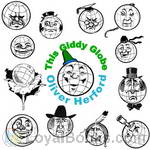 This Giddy Globe
This Giddy Globe
Is there a genre called FUN? Yes, and this is it! Insanely humorous geography that will have you rolling on the floor laughing with your sides hurting. | |
 Kitten's Garden of Verses
Kitten's Garden of Verses
The Kitten's Garden of Verses is a book of short poetry, modeled after Robert Louis Stevenson's A Child's Garden of Verses. Of course, the poems in this book are intended for kittens rather than children! | |
By: Oliver Lodge (1851-1940) | |
|---|---|
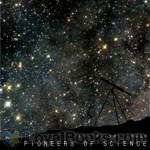 Pioneers of Science
Pioneers of Science
This book takes its origin in a course of lectures on the history and progress of Astronomy arranged for Sir Oliver Lodge in the year 1887. The first part of this book is devoted to the biographies and discoveries of well known astronomers like Copernicus, Brahe, Kepler, Galileo and Newton. In the second part, the biographies take a back seat, while scientific discoveries are discussed more extensively, like the discovery of Asteroids and Neptune, a treatise on the tides and others. | |
By: Oliver Onions (1873-1961) | |
|---|---|
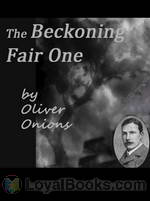 The Beckoning Fair One
The Beckoning Fair One
A classic ghost story of a haunted house, and the haunted man who lives in it. | |
 Compleat Bachelor
Compleat Bachelor
George Oliver Onions (1873 – 1961) was a British writer of story collections and over 40 novels…. Onions wrote detective fiction, social comedy, historical fiction and romance novels. This social comedy of late Victorian England is among his first published materials. Rollo Butterfield, the compleat bachelor, looks upon his family and friends with an affectionate, gently humorous eye. | |
By: Oliver Optic (1822-1897) | |
|---|---|
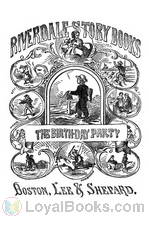 The Birthday Party, A Story For Little Folks
The Birthday Party, A Story For Little Folks
Flora Lee’s birthday came in July. Her mother wished very much to celebrate the occasion in a proper manner. Flora was a good girl, and her parents were always glad to do any thing they could to please her, and to increase her happiness. | |
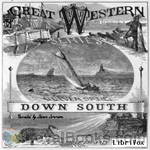 Down South or Yacht Adventure in Florida
Down South or Yacht Adventure in Florida
"Down South" is the fifth and last volume but one of the "Great Western Series." The action of the story is confined entirely to Florida; and this fact may seem to belie the title of the Series. But the young yachtsman still maintains his hold upon the scenes of his earlier life in Michigan, and his letters come regularly from that State. If he were old enough to vote, he could do so only in Michigan; and therefore he has not lost his right to claim a residence there during his temporary sojourn in the South... | |
 Up the River
Up the River
Up the River is the sixth and last of “The Great Western Series.” The events of the story occur on the coast of Florida, in the Gulf of Mexico, and on the Mississippi River. The volume and the series close with the return of the hero, by a route not often taken by tourists, to his home in Michigan. His voyaging on the ocean, the Great Lakes, and the Father of Waters, is finished for the present; but the writer believes that his principal character has grown wiser and better since he was first introduced to the reader... | |
By: Omar Khayyám (1048-1131) | |
|---|---|
 Rubáiyát of Omar Khayyám (Le Gallienne) - Version 2
Rubáiyát of Omar Khayyám (Le Gallienne) - Version 2
One of the greatest works of poetry in history, this lyric poem presents the deep feelings and emotions of the poet on subjects such as life, death, love, God and destiny. | |
By: Onoto Watanna (1875-1954) | |
|---|---|
 Heart of Hyacinth
Heart of Hyacinth
An abandoned young white woman dies with a baby in her arms in rural Japan. The child is raised by a Japanese woman. This child sees herself only as Japanese. As she grows older, necessity forces her into a racial awakening. And a romantic one. | |
By: Ontario Ministry of Education | |
|---|---|
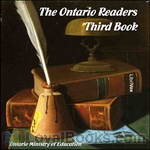 The Ontario Readers Third Book
The Ontario Readers Third Book
The Ontario Readers is a school book first published in 1909, by the Ontario Ministry of Education, containing short excerpts of literary works, both stories and poems, geared to grade-school age children. | |
By: Oscar Wilde (1854-1900) | |
|---|---|
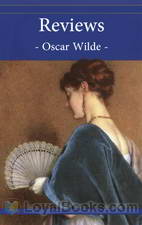 Reviews
Reviews
Wilde’s literary reputation has survived so much that I think it proof against any exhumation of articles which he or his admirers would have preferred to forget. As a matter of fact, I believe this volume will prove of unusual interest; some of the reviews are curiously prophetic; some are, of course, biassed by prejudice hostile or friendly; others are conceived in the author’s wittiest and happiest vein; only a few are colourless. And if, according to Lord Beaconsfield, the verdict of a continental nation may be regarded as that of posterity, Wilde is a much greater force in our literature than even friendly contemporaries ever supposed he would become... | |
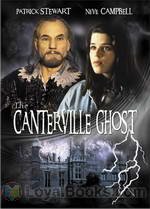 The Canterville Ghost
The Canterville Ghost
An American diplomat's family moves into an ancient stately mansion. They're warned by the owner that it is haunted by a most horrifying and gruesome spirit who had once cruelly murdered his own wife. The story progresses with creaking floor boards, mysterious passages, dark attics, clanking chains, and weird howling. Yet, the reader is totally unprepared for Oscar Wilde's brand of tongue in cheek humor as he takes all the ingredients of a traditional ghost story and turns it on its head, and creates a hilarious parody instead of a morbid saga! The Canterville Ghost was the first of Oscar Wilde's short stories to be published... | |
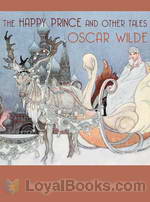 The Happy Prince and Other Tales
The Happy Prince and Other Tales
The Happy Prince and Other Tales (also sometimes called The Happy Prince and Other Stories) is an 1888 collection of stories for children by Oscar Wilde. It is most famous for The Happy Prince, the short tale of a metal statue who befriends a migratory bird. Together, they bring happiness to others, in life as well as in death. The stories included in this collection are:The Happy PrinceThe Nightingale and the RoseThe Selfish GiantThe Devoted FriendThe Remarkable RocketThe stories convey an appreciation for the exotic, the sensual and for masculine beauty. | |
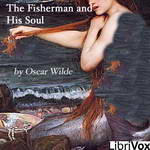 The Fisherman and His Soul
The Fisherman and His Soul
”The Fisherman and his Soul” is a fairy tale first published in November of 1891 in Wilde’s “A House of Pomegranates”. It tells of a fisherman who nets and falls in love with a mermaid. But to be with her he must shed his soul, which goes off to have adventures of its own. Will forbidden love endure? | |
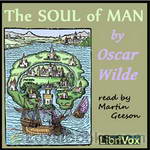 The Soul of Man
The Soul of Man
“(T)he past is what man should not have been. The present is what man ought not to be. The future is what artists are.”Published originally as “The Soul of Man Under Socialism,” this is not so much a work of sober political analysis; rather it can be summed up as a rhapsodic manifesto on behalf of the Individual. Socialism having deployed technology to liberate the whole of humanity from soul-destroying labour, the State obligingly withers away to allow the free development of a joyful, anarchic hedonism... | |
By: Ossip Schubin (1854-1934) | |
|---|---|
 Our Own Set
Our Own Set
The Austrian nobility in Rome forms a very close circle, into which only those of high rank and wealth are admitted. They managed to get along with Cecil Sterzl, who, although not one of their own, is regarded as quite an amiable man. However, when he brings his younger sister Zinka into that circle, she is received very coldly at first, if at all. And when, with her fresh and unaffected manners, she wins one heart after another, especially that of the handsome Count Sempaly, she also excites jealousy and contempt in many members of that "set"... | |
By: Ottilie Wildermuth (1817-1877) | |
|---|---|
 Queen
Queen
Maggie is an orphan who depends on the charity of the farmer she lives with. She tries to be cheerful and helpful to everyone where she is. However, Maggie dreams of being a queen. But how can a poor orphan ever become anything other than what she is? | |
By: Ouida (1839-1908) | |
|---|---|
 A Dog of Flanders
A Dog of Flanders
"Nello and Patrasche were left all alone in the world." So begins the poignant story of the two orphans who were to become inseparable companions. They were Nello, an orphaned youth, and Patrasche, the dog which he and his grandfather saved from near death one day. The tale takes place outside of Antwerp, and so popular has this story become that there is a commemorative statue of Nello and Patrasche standing in the village yet today. The story is powerful, and masterfully written by Marie Louise de la Ramée under the pseudonym Ouida. | |
By: Owen Wister (1860-1938) | |
|---|---|
 The Virginian
The Virginian
Ostensibly a love story, the novel really revolves around a highly mythologized version of the Johnson County War in 1890’s Wyoming … The novel takes the side of the large ranchers, and depicts the lynchings as frontier justice, meted out by the protagonist, who is a member of a natural aristocracy among men. | |
 The New Swiss Family Robinson
The New Swiss Family Robinson
A parody of its famous predecessor, this short piece was written by Owen Wister for the Harvard Lampoon | |
 Red Men and White
Red Men and White
These eight stories are made from our Western Frontier as it was in a past as near as yesterday and almost as by-gone as the Revolution; so swiftly do we proceed. They belong to each other in a kinship of life and manners, and a little through the nearer tie of having here and there a character in common. Thus they resemble faintly the separate parts of a whole, and gain, perhaps, something of the invaluable weight of length; and they have been received by my closest friends with suspicion. ...When... | |
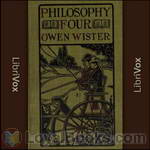 Philosophy 4: A Story of Harvard University
Philosophy 4: A Story of Harvard University
Owen Wister's wry humor enlivens this comedic story of three sophomores during exam week at Harvard. | |
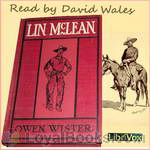 Lin McLean
Lin McLean
Lin McLean is an unaffected, attractive young cowboy in the Wyoming territory before statehood. This book is various stories in his life. | |
 Members of the Family
Members of the Family
Members of the Family is a collection of eight short stories about people in the Wyoming Territory in the late 19th and early 20th centuries. | |
 A Journey in Search of Christmas
A Journey in Search of Christmas
Cowboy Lin McLean rides into frontier Cheyenne, Wyoming, at Christmastime and learns a powerful meaning of Christmas. Author Owen Wister is well known for his western writings, famously the novel The Virginian. Illustrations are by the western artist Frederic Remington. | |
 The Jimmyjohn Boss and Other Stories
The Jimmyjohn Boss and Other Stories
This is the fifth published book of Owen Wister, author of the archetypical Western novel, The Virginian. Published in 1900, it comprises eight Western short stories. | |
 Padre Ignacio, Or The Song Of Temptation
Padre Ignacio, Or The Song Of Temptation
Padre Ignacio has been the pastor of California mission Santa Ysabel del Mar for twenty years. In 1855 a stranger rides into the mission bringing news and a spiritual crisis. It's really more of a novella than a novel. | |
 Lady Baltimore
Lady Baltimore
Augustus visits King's Port, South Carolina, at the request of his Aunt Carola, and at her expense. She wants him to research geneaologies and records to find proof that he is descended from royalty so that he can join her exclusive club, the Colonial Society. While there, he becomes involved in a love affair between John Mayrant and Eliza La Heu. | |
By: P. G. Wodehouse | |
|---|---|
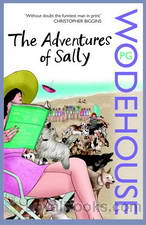 The Adventures of Sally
The Adventures of Sally
Pretty, charming, but impoverished Sally Nicholas' humdrum life is turned upside down when fate decides to step in. In this breezy, romantic comedy, PG Wodehouse delights readers with his portrayal of a charming young American girl who unexpectedly inherits a fortune which changes her life forever. The story follows Sally's fortunes and is told in Wodehouse's typical humorous style and keeps the reader thoroughly entertained to the very end. First published in 1921 as a serial in Collier's Magazine in the US and in 1922 in the Grand Magazine, UK it appeared in book form titled Mostly Sally in 1922... | |
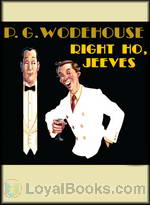 Right Ho, Jeeves
Right Ho, Jeeves
If you're encountering the zany Bertie Wooster and his exceptionally astute Man Friday, Jeeves, for the first time, be assured that you're embarking on a lifetime of fun and laughter! On the other hand, for eternal Wodehouse fans, Right Ho Jeeves provides more glimpses of the delightful world created by one of the best loved English writers. It is the second in the series of Bertie Wooster and Jeeves novels and features some of the regular characters of Brinkley Court, the country seat ruled over by Bertie's much-loved Aunt Dahlia... | |
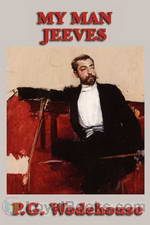 My Man Jeeves
My Man Jeeves
First published in 1919, My Man Jeeves is a collection of short stories featuring the well known fictional characters Jeeves and Bertie Wooster. The compilation consists of eight stories, of which four feature the popular duo while the other four stories feature Reggie Pepper, an early model of Bertie Wooster. Set in the early 20th century, the stories carry much humor, wit, and charming mischief as the characters seem to attract trouble wherever they go. Wodehouse sets the stories in the early 20th century and allows the audience to enter the world of the upper-class establishments, and experience the many awkward situations the characters find themselves in... | |
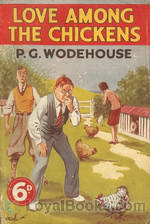 Love Among the Chickens
Love Among the Chickens
A young, but not too brilliant writer is conscripted by a ne'er-do-well friend to help out on a chicken farm in remote Dorset. While traveling to the country, the writer encounters a lovely young girl and her academician father on the train. He is delighted to discover that she is reading a copy of his latest book. In the countryside, he also discovers that the professor and his daughter are neighbors. However, over dinner one night, he gets into an acrimonious debate with the elderly scholar who storms out, furious with his daughter's potential suitor... | |
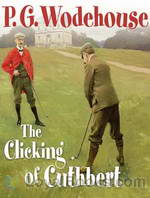 The Clicking of Cuthbert
The Clicking of Cuthbert
The first of two books that he wrote on golfing themes, The Clicking of Cuthbert by PG Wodehouse sparkles with typical Wodehousian wit, humor and general goofiness! An avid golfer himself, Wodehouse published the ten stories in this volume in 1922. In 1924, an American edition titled Golf Without Tears was published. Since then it has enjoyed undimmed popularity among both Wodehouse fans and golfing enthusiasts. Nine of the stories contained in this book are narrated by the Oldest Member, a character who has become a cult figure among Wodehouse fans... | |
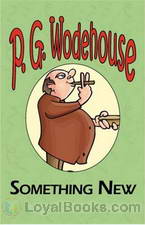 Something New
Something New
When the absent-minded Earl of Emsworth wanders off with the pride of his scarab collection, American millionaire J. Preston Peters is willing to pay $5000 to the person who can get it back for him. Discretion is necessary since Peters’ daughter is engaged to Emsworth’s son. Joan Valentine and Ashe Marson both decide to go after the reward—she as Aline Peter’s ladies maid, and he as Mr. Peter’s valet—and they all end up at Blandings Castle. But is it possible for anyone to steal back the scarab with The Efficient Baxter ever vigilant? This is, IMHO, one of Wodehouse’s funniest novels. –Debra Lynn | |
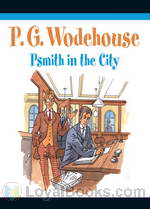 Psmith in the City
Psmith in the City
Mike’s dream of studying and playing cricket at Cambridge are thwarted as his father runs into financial difficulties. Instead, Mike takes on the job of clerk at the “New Asiatic Bank.” Luckily, school friend Psmith, with his boundless optimism and original views, soon joins his department, and together they endeavour to make the best of their new life in London. | |